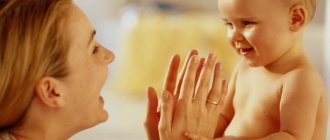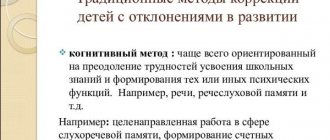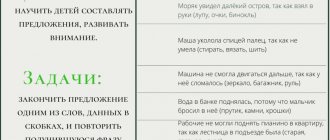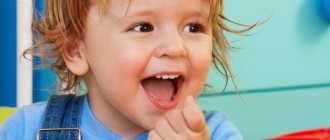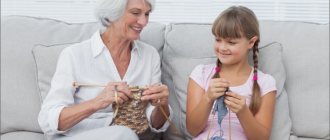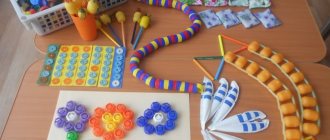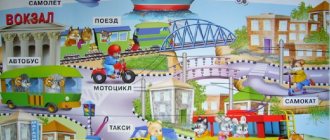Parents, and often teachers, underestimate the need to develop gross motor skills in children. And it is the basis for the formation of fine motor skills, which is important when preparing for school. Let's figure out what gross motor skills are, why and how to develop them.
What are gross motor skills?
Gross motor skills, or general, are active movements of the body that involve the arms, legs, torso, and head. In fact, adults use these skills without thinking, but children have to gradually master them.
During the first year of life, the baby develops rapidly and learns to control his body:
- focuses the gaze;
- holds head;
- controls arms and legs;
- learns to sit;
- crawls;
- tries to get up;
- walks, runs, jumps.
The health and life of the child depends on how successfully all these important processes take place.
- By the age of 2, a child masters complex gross motor skills of the arms and legs. The baby throws and kicks objects. Holding his hand, he climbs the stairs.
- Children at 3 years old learn to walk, run, and jump more confidently.
The formation of gross motor skills occurs through any movements: active games, copying the actions of adults and animals, sports activities, dancing, aerobics.
It is important to start working with your child as early as possible. Good physical development of a preschooler is the key to his future success in school and life and the opportunity to avoid many problems.
Calendar for the development of children's fine motor skills
Listed below are the basic actions associated with fine motor skills, the development of which is inherent in children of a certain age.
From birth to 4 months
At the beginning of life, the baby learns to move his limbs, while trying to reach a toy or other object that interests him. There is no difference in control over the right or left hand. At the same time, babies learn to coordinate eye and head movements. For example, hearing the mother’s voice, the baby turns his head in that direction. He can even grab a toy with his hands, however, this will still not be a conscious, but a reflexive movement.
4-12 months
Then, until reaching the age of one, the baby begins to control his hands better and better. If at first he could carry out some actions only with two hands, now he can do it with one. The baby is already quite consciously grabbing the toy. After six months he can grasp an increasingly smaller object. Since by the age of one year the baby is able to grasp even the smallest object with his fingers, this, if neglected, can lead to airway obstruction. In addition, during this period, children learn to transfer objects from hand to hand, turn pages in their favorite books and kick a ball.
1-2 years
In a sitting position, the baby confidently maintains his balance, and he no longer needs to help himself with his hands to do this. He uses the latter more for games. Children of this age still do not give preference to the right or left hand, but by the end of this period the dominance of one of the hands makes itself felt. Finger movements become more and more confident. Although the baby continues to hold the pencil with his entire palm, he is already trying to burst the soap bubble with his index finger. If up to two years he can only draw circles, then at two years vertical and horizontal lines already emerge from under his brush.
2-3 years
In the third year of life, coordination, balance and body control leave more room for the hands and fingers. Most often, the forearm and hand are involved in the movements. After two years, the child’s drawing style changes - he now holds a pencil as if he were pointing it at a sheet of paper. Towards the end of this period, circles and lines begin to turn out better, and some drawings begin to appear based on them. A three-year-old child should be able to cut a sheet of paper in half, although not too straight.
3-4 years
The baby finds use for both hands: if he confidently holds a pencil with his dominant hand, then with the help of the second, auxiliary hand, he fixes a sheet of paper. His drawings are becoming more and more complicated, the baby strives to copy figures from coloring books or books. By the age of four, he holds a pencil or pen, like adults - with three fingers. From this moment on, he can be considered ready to master writing. He also works much more confidently with scissors - he can cut along a drawn line.
4-5 years
Finger motor skills at this age reach such a level of development that the baby makes many movements with just one hand, without unnecessarily using the shoulder and forearm. He paints better, without going beyond the outline of the figure, and can cut out a square very easily.
5-6 years
Hand movements are very harmonious and coordinated. The baby should confidently hold a pen with three fingers, and scissors - just like adults. When coloring, he is able to take into account small details. For preschoolers, sufficient development of fine motor skills should provide access to further productive learning in the elementary grades. Therefore, parents should carefully monitor this process, ensuring that development does not lag behind the maturation calendar.
Why develop
Without developed gross motor skills, the full formation of a person is impossible. Benefits of developing motor skills:
- strengthen the musculoskeletal system;
- improve coordination;
- provide protein synthesis in muscles;
- stimulate cognitive activity;
- increase performance;
- develop independence;
- improve speech;
- help develop reading and writing skills;
- motivate to be active;
- form interhemispheric interaction;
- develop creative potential;
- promote successful socialization;
- learn to control your body in space;
- contribute to understanding the world and oneself.
As you can see, the value of developing gross motor skills is great. This work allows us to preserve and increase the physical and mental development of children.
Difficulties of a child with gross motor deficits
Each baby is individual and develops unevenly. It is better not to compare your child with other children. One child may begin to walk at 9 months, and another after a year. This is fine. The main thing is to exercise regularly with your baby. However, there are criteria by which it can be determined that a child has poorly developed gross motor skills:
- Drawing and writing skills are difficult;
- inability to dress independently and use cutlery;
- inability to maintain a sitting posture;
- loses orientation in space: falls, stumbles, crashes;
- lethargy;
- speaks poorly;
- cannot play with small toys;
- poorly switches to new activities;
- low self-esteem;
- finds it difficult to communicate with peers.
If you suspect a gross motor disorder, see your doctor for correction.
Toys for the development of children's fine motor skills
- You can develop fine motor skills with a wide variety of objects that can be used for educational games. Dry beans or peas, for example, are perfect for this purpose. You can mix several types of legumes and invite your child to sort them. For children under three years old, such an activity is still too early and even fraught, but for three-year-olds and older it will be very useful to be in the role of Cinderella.
- There is a useful guessing game with very simple rules. The child should be blindfolded and, one by one, place objects well known to him in his hands, which he must guess and describe their properties.
- You can very successfully develop fine motor skills with the help of drawing sets and stationery (coloring books, children's scissors, markers, pencils) - you just have to show your imagination.
- An excellent training tool is a mosaic, of which there are many variations in size, type and for all ages. From mosaics you can gradually move on to puzzles, which perfectly develop imagination, thinking, logic and motor skills.
- Glove puppets are a great way to develop motor skills and can be used even in early childhood - but then, of course, they must be supervised by an adult. As the baby grows up, he can handle such a toy himself. With the help of such dolls, you can act out familiar fairy tale plots, and later come up with your own.
How to develop
The main tasks of developing gross motor skills are:
- creating conditions for the implementation of the child’s motor activity;
- developing skills to control and manage movements;
- teaching coordination of actions;
- development of motor activity.
Based on the tasks, parents need to arrange the space in the room, stock up on the necessary equipment and control the process. There should be enough space in the room for running, jumping, and bending. Start with the simplest thing: teach your baby to do morning exercises. If it is possible to spend it outside, even better. Simple exercises are quite enough: squatting, walking, turning, bending.
Buy various equipment for outdoor games: balls, jump ropes, hoop. At home, you can play bowls, basketball, gorodki, and dodgeball with your child. The ideal option would be to arrange a special sports corner in the room. If this is not available, you can simply dance to your favorite music, alternating slow and fast movements.
For walks on the street, stock up on a bicycle, scooter, roller skates and other age-appropriate equipment. In winter - skates, skis, slides. In addition, to develop your child’s physical activity, you can enroll in the nearest children’s center or sports section, where ideal conditions have been created for full development.
Household chores also contribute to the development of gross motor skills. The child should be loaded with feasible chores around the house. For example, sweep the floor, wipe the table, arrange toys, hang or fold laundry.
Improving skills
What else will help 2-3 year old children improve their gross motor skills? Let's see!
- Excitedly rush around the house and yard with the rolling toy. We don’t know why it is so incredibly popular among kids, but the fact remains: the rolling toy is a 100% children’s hit.
- Build towers from large sofa cushions. Climb to the very top, crawl into the arch formed from pillows, lift and throw them.
- Bounce after the balloon. Accidentally burst it. Be a little scared and maybe even cry. Wait until the adults inflate a new one. And again!
- Play with an inflatable ball: throw it into the hands of mom, dad, grandpa, grandma. In the cat. Into a flower. Oh! Of course, by accident.
- Trying to “tame” a swinging ladder or rope bridge on a playground. For now, with your help. But even this helps to work out the muscles of the torso.
Games and exercises to develop gross motor skills
There are a great many exercises and games for the development of speech and gross motor skills. These could be classes to strengthen the muscle corset, coordination to create spatial concepts in preschool children. Games are played in pairs or groups.
- "Boat". Lying on your back with arms outstretched. The child needs to simultaneously raise his straight arms, head and legs. Hold the pose for as long as possible. This same exercise can be done while lying on your stomach.
- "Log." Starting position as in the previous exercise. Roll your entire body alternately to the right and left.
- Lying on your stomach, put your hands behind your head. Spread your elbows to the sides. Slowly raise your upper body while keeping your legs straight.
- "Spider." Squat down, rest your palms behind you. Crawling imitating an insect.
- "Goose step" Squatting position, only hands on knees. Walk in different directions: forward, backward, left, right. You can make the exercise more difficult by placing a flat object on your head.
- "Narrow path" Lay out a long rope with twists and turns on the floor. Invite the child to walk along it. You can roll cars and other toys along an imaginary path.
- Stand alternately on your right and left legs, on your toes, on your heels. Make a “swallow”.
- March in place with your legs raised high.
- Exercises with cross movements of arms and legs.
- "Hit the target." The game develops the eye well. You can purchase a traditional ring thrower or build it yourself from scrap material. Any container where you need to throw objects at a distance will do. This also includes options for games of bowling, small towns, and skittles.
- Ball games or fitball exercises.
Also find out what exercises there are to develop fine motor skills in children.
Fun exercises for babies
This is my toy!
An activity option for a child who already knows how to grab and hold objects. When the baby is lying in the crib, put a soft rattle in his hands and gently, weakly pull it towards you. Let the baby try to pull the toy towards him. This exercise allows you to train your biceps, which are responsible for bending your arms at the elbow and turning your hands.
Expedition for children's treasures
Place your baby's favorite toys around the room or playpen and give him freedom of movement: let him try to crawl to his favorite bunnies, blocks and pyramids. This will awaken the child's interest in independent movements.
Multi-colored leaves
The exercise is suitable for babies who are already making their first attempts to stand on their feet, holding onto the sides of the crib. Glue several colored stickers on the wall next to the crib - they should be inaccessible from a sitting position. But it should be easy for the baby to get them by standing on his feet. Your little one will surely enjoy tearing leaves off the wall. Do not leave your child with stickers unattended.
Conclusion
Gross motor skills are the motor skills a child needs for full physical and mental development. Abilities are formed from an early age through simple exercises, housework, outdoor games and active sports activities.
At the Baby Club child development centers, we pay attention to both gross and fine motor skills. We use only proven, popular development methods. Our specialists will be happy to prepare your child for kindergarten or school and help him develop as a person.

